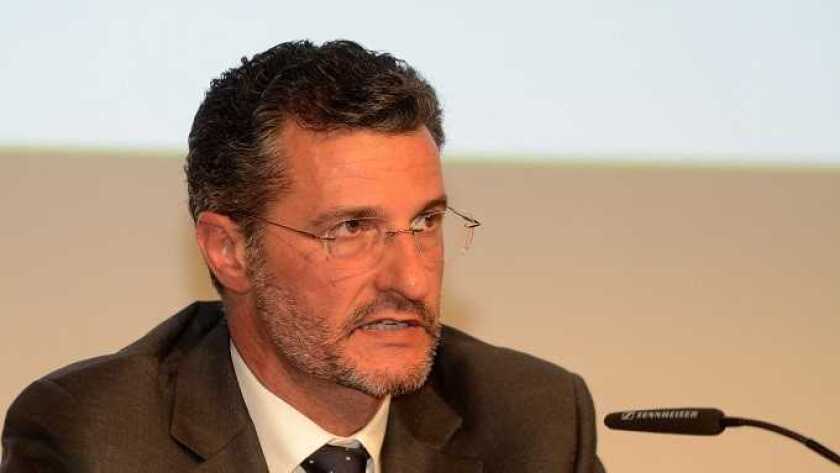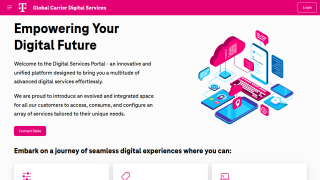What have been Telxius’ key developments and stand outs in Latin America over the past year?
We have been focused on reinforcing our leadership in the Latin American region. With that goal in mind, in the past year we have been working on BRUSA, a submarine cable more than 11,000 km long that will connect Rio de Janeiro (Brazil) with San Juan (Puerto Rico) and Virginia Beach (USA). In fact, we are building BRUSA as we speak. It is the first cable going straight from a landing point in Virginia) to Brazil. It is a new route, taking advantage of Virginia Beach’s direct connection to one of the biggest concentration of data centres in the world (located in the area of Virginia and Ashburn, near Washington DC). It is also important to remark that BRUSA will be linking this area to the main driver of growth and traffic in Latin America, Brazil. The deployment of this cable represents one of our largest infrastructural asset investments in more than a decade.
If we look at Telxius as a company, with its two business segments, cable and towers, we have also extended our presence in Latin America with the acquisition of 304 communications towers in Argentina, in the metropolitan area of Buenos Aires. With this operation, we have also strengthened our position in the region, where we already own 2.900 towers located in Brazil, Chile, and Peru. There is a great market growth potential in these countries due to their population, geographical features and the exponential increase in data traffic forecasted for the coming years.
How has wholesale demand in the region evolved in recent years and how is Telxius aiming to meet those demands this year?
With over $1.5 billion of new cable investment in 2017 and 2018, Latin America is today a leading region when it comes to growth in telecommunication infrastructure. Telecom providers have seen a great possibility of expansion there. This area is still lagging behind in terms of infrastructure, so we believe we need to provide faster subsea cables, more towers and better communications to the whole region as mobile technology evolves. Big content providers are also pushing for the Latin American region, investing in new submarine infrastructure.
With initiatives such as BRUSA and the Pacific Caribbean Cable System (PCCS), which links Jacksonville in the US with the British Virgin Islands, Puerto Rico, Aruba, Curacao, Colombia, Panama and Ecuador, we have been committed to increase connectivity and reliability of communications in the region, expanding our network and the availability of broadband services.
Over this infrastructure we provide connectivity services like Global Carrier Ethernet, which allows customers access a broad range of bandwidth options, different service topologies, with the simplicity of Ethernet technology. With OTN, we foster Layer 1 services scalability with more efficient transport techniques and additional service resiliency.
Telxius is adding new VAS to IP transit to confront the new challenges in the region. For instance, the ever growing trend of IXP access and interconnection in the area has received deep focus from our company, resulting on innovative solutions such as our Virtual NAP service.
We also provide colocation services to customers who are interested in deploying their networks in Latam taking advantage of our submarine cable facilities. We provide secure space and energy, along with remote operation to help customers focus 100% on their core business.
Finally, regarding security, we are in a prime position to help our customers to avoid and mitigate DdoS attacks. During last year we have seen how DdoS attacks have growth to huge volumes which only a Tier1 provider like us is able to face. We are proud of our platform, which places us among the world’s top 5 antiDdoS providers.
What are your strategic priorities for the Latin America in 2018 and what announcements can we expect from Telxius in the region this year?
Our number one priority is building and deploying BRUSA. It will be a game changer in the region as it will become the highest-capacity subsea cable to ever connect the Americas and it will connect the two largest economies of the American region. Built with 8 fiber pairs it will support data transmission for up to 138 Tbps.
The cable consists of an eight-fiber pair open system, with one omnibus fiber pair stopping in San Juan and three fiber pairs featuring R-OADM technology dropping optical bands in San Juan and Fortaleza. We also have plans of moving further in South America with BRUSA to improve connectivity in the area, but we haven’t specified when will it happen and where we will go from there. Our idea is that our latest-generation submarine cables BRUSA and MAREA, both joining in Virginia, will unite and deliver connectivity to the key data hubs all around the world.
What broad trends do you see in telecoms in the next 12 months?
As stated before, the Latin American region is currently undergoing a submarine cable boom. With the increase of data generation and consumption, the older cables won’t be able to support current traffic and performance needs. It becomes clear that new cable infrastructure will have to include the maximum level of capacity to take full advantage of future technological development. Our BRUSA initiative is not the only cable that starts to look at Brazil as a promising land for telecommunications. We can expect a large share of growth in telecom infrastructure services, especially in Brazil, the biggest economy in the southern part of the continent. Nobody will use less bandwidth in the future. Actually, we are seeing how capacity is increasing 40% per year on average. The growth that we will experience before 2020 will surpass that of the previous 15 years.
Telxius is automating processes with SDN/NFV and open APIs to be more efficient. As the market is demanding more bandwidth between data centres, we are working with Bandwidth on Demand Services to provide “Pay-as-you-go” service options to customers. In a global context, the need for stronger bandwidth will also drive infrastructure projects to support the new trend in the wholesale sector: 5G. As we move into an interconnected world, the telco business is adapting in response to customers demand. The Internet of Things, cloud, and mobility will likely impact any decision in the wholesale market in the upcoming years, as both user expectation and competition rise hand by hand.
The open APIs and On Demand services are the key building blocks to ingrate the capacity services with the applications that are coming next.
Finally, security will be a key issue as we see how attacks are becoming more global and dangerous. At Security will remain an absolute priority and infrastructure companies play a key role in protecting the economy as a whole.





